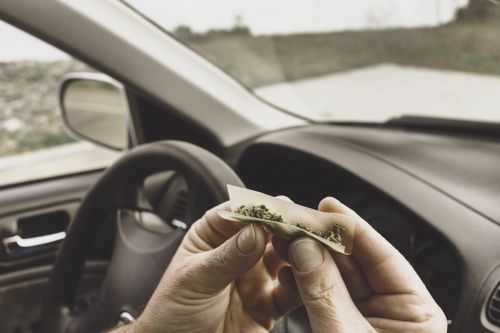How High is Too High to Drive?

Suppose you are an active member of the cannabis community. In that case, you’ve likely encountered the controversial claim that some individuals drive better under the influence. While we can’t vouch for every driver’s experience, it’s crucial to acknowledge the prevailing consensus among experts and organizations, including the National Organization for the Reform of Marijuana Laws (NORML), which strongly advises against operating a vehicle while impaired by marijuana. Despite assertions that marijuana might be safer than alcohol or certain prescription drugs, scientific studies reveal a different story, demonstrating that cannabis can lead to worsened car handling, increased reaction time, impaired distance estimation, drowsiness, and reduced vigilance during simulator tasks.
The dichotomy between the science of marijuana impairment and existing laws aimed at preventing impaired driving creates a complex web that challenges both policymakers and cannabis users alike. In zero-tolerance states, any detectable amount of marijuana in the system can result in a DUI charge. However, this approach fails to consider that chronic users may retain marijuana in their systems for extended periods, even weeks after their last use. Complicating matters further, some states with strict zero-tolerance policies also permit the legal use of medicinal marijuana. This raises a pertinent question: Should medical cannabis patients be expected to abstain from driving altogether?
Colorado, a state at the forefront of cannabis legalization, has opted for a different strategy, establishing a legal threshold of five nanograms of THC per cubic milliliter of blood. While this approach attempts to quantify impairment, critics argue that the threshold is unreasonably low and may not accurately reflect an individual’s impairment level. The arbitrary nature of such limits adds to the challenge of creating effective legislation that addresses the nuances of cannabis impairment.
The fundamental question remains: How high is too high to drive? Ultimately, individuals are responsible for assessing their impairment levels before getting behind the wheel. Emerging technologies offer potential solutions, with various apps available for Android and iOS designed to test reaction time and hand-eye coordination. These tools empower users to make informed decisions about their ability to drive safely. However, they are not foolproof, and users must exercise their best judgment to avoid the legal consequences of drugged driving.
In navigating the hazy landscape of cannabis and driving, it’s essential to recognize the limitations of existing laws and the need for more nuanced approaches. The one-size-fits-all model of zero tolerance has proven inadequate, prompting a call for legislation that considers individual differences, patterns of use, and the actual impairment caused by cannabis. Striking a balance between public safety and personal freedom is a complex task, one that requires ongoing dialogue and collaboration between lawmakers, scientists, and the cannabis community.
For those who find themselves facing a drugged driving charge, seeking legal counsel becomes imperative. Consulting with an attorney can help navigate the legal intricacies surrounding cannabis impairment and ensure that individuals receive fair treatment within the legal system. As we continue to grapple with the complexities of cannabis and driving, it is crucial to foster a comprehensive understanding that incorporates both scientific evidence and the diverse experiences of cannabis users.
In examining the critical question of determining an acceptable threshold for impaired driving, it becomes evident that “How High is Too High to Drive?” encompasses multifaceted considerations. The exploration of legal limits, cognitive impairment, and the varying effects of substances on individuals highlights the complexity of this issue. Thomas & Ahnell, LLC, with their expertise in navigating legal complexities, contributes significantly to the discourse surrounding impaired driving. As society grapples with evolving attitudes toward substance use, it is imperative to engage in nuanced discussions that go beyond simplistic metrics. Recognizing the significance of individual differences, enforcement challenges, and the need for informed legislation becomes pivotal in forging a comprehensive approach to road safety. Thus, pursuing an effective and fair framework for addressing impairment on the roads demands ongoing collaboration between legal professionals, scientists, and policymakers.
Do you have further questions or concerns? Call us or contact the attorneys at Thomas & Ahnell, LLC, and we will be happy to help.

